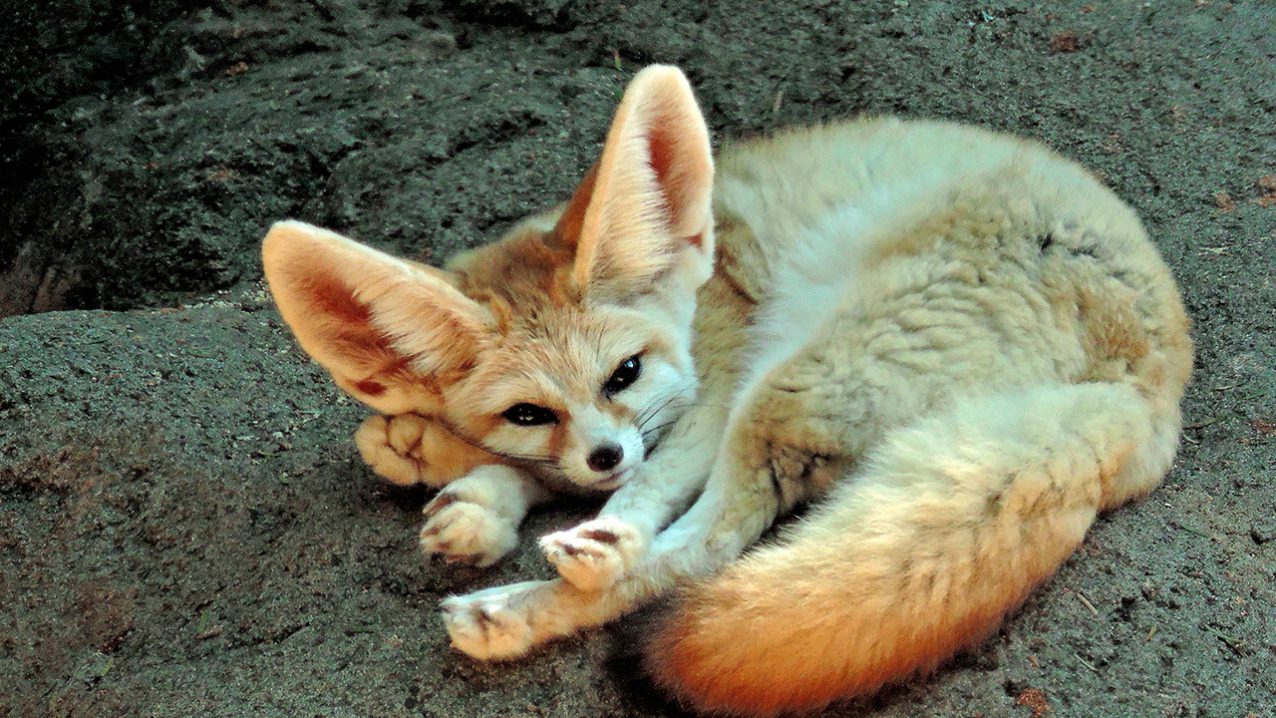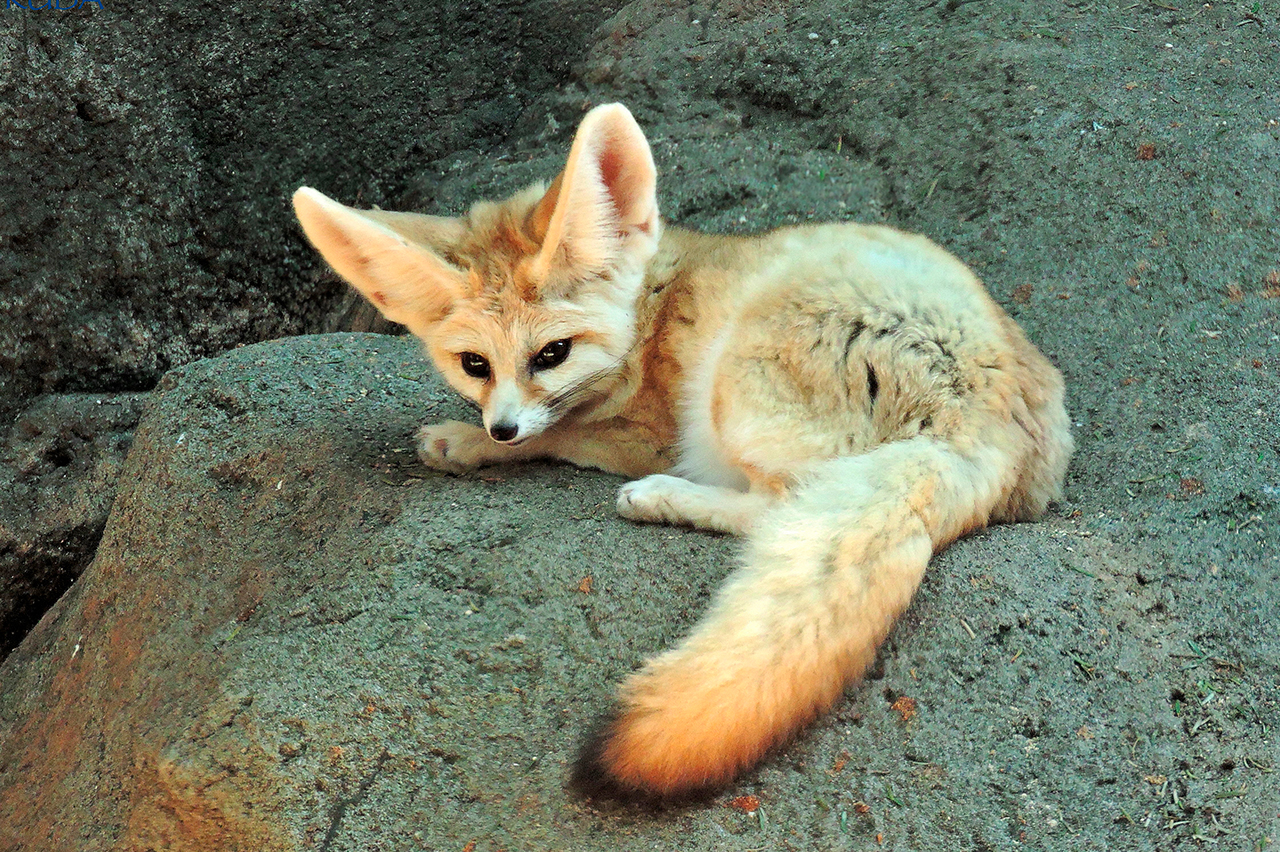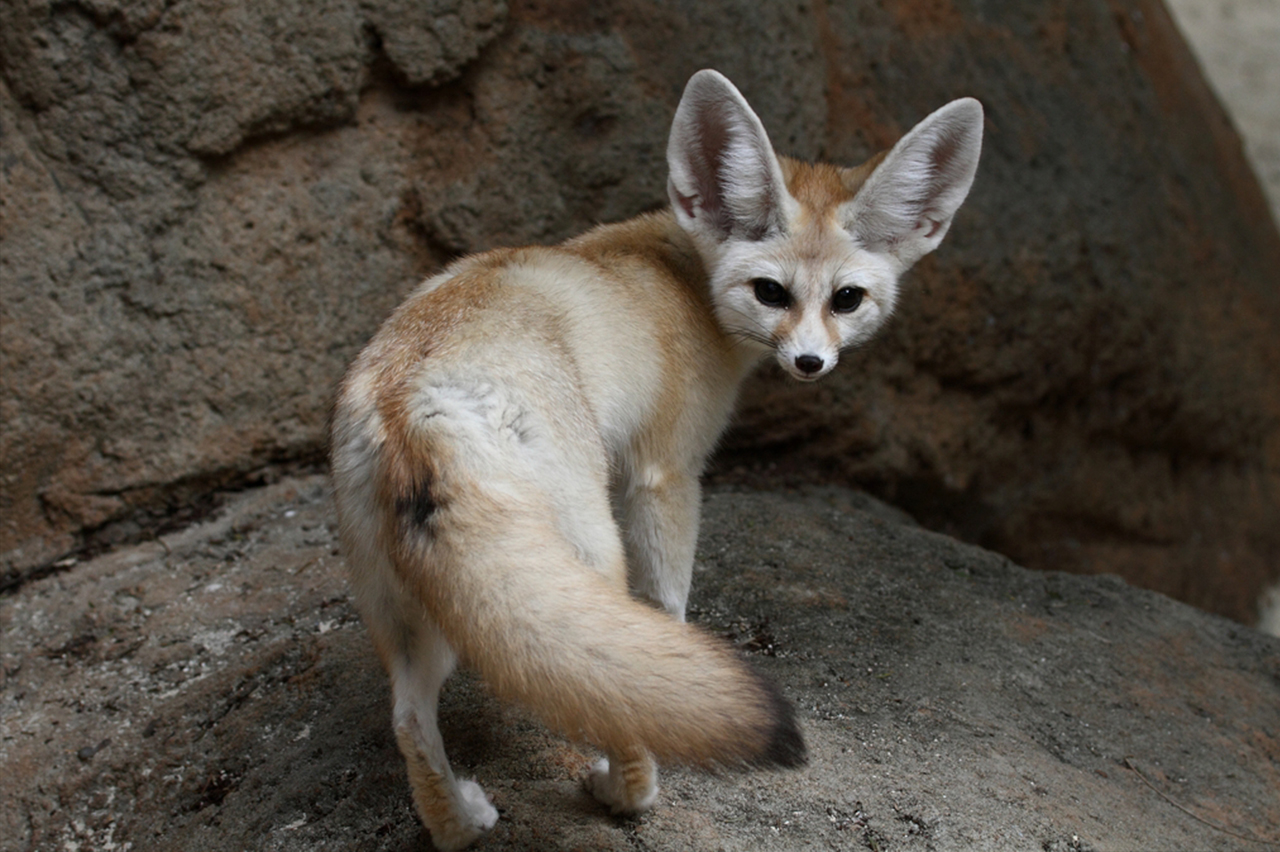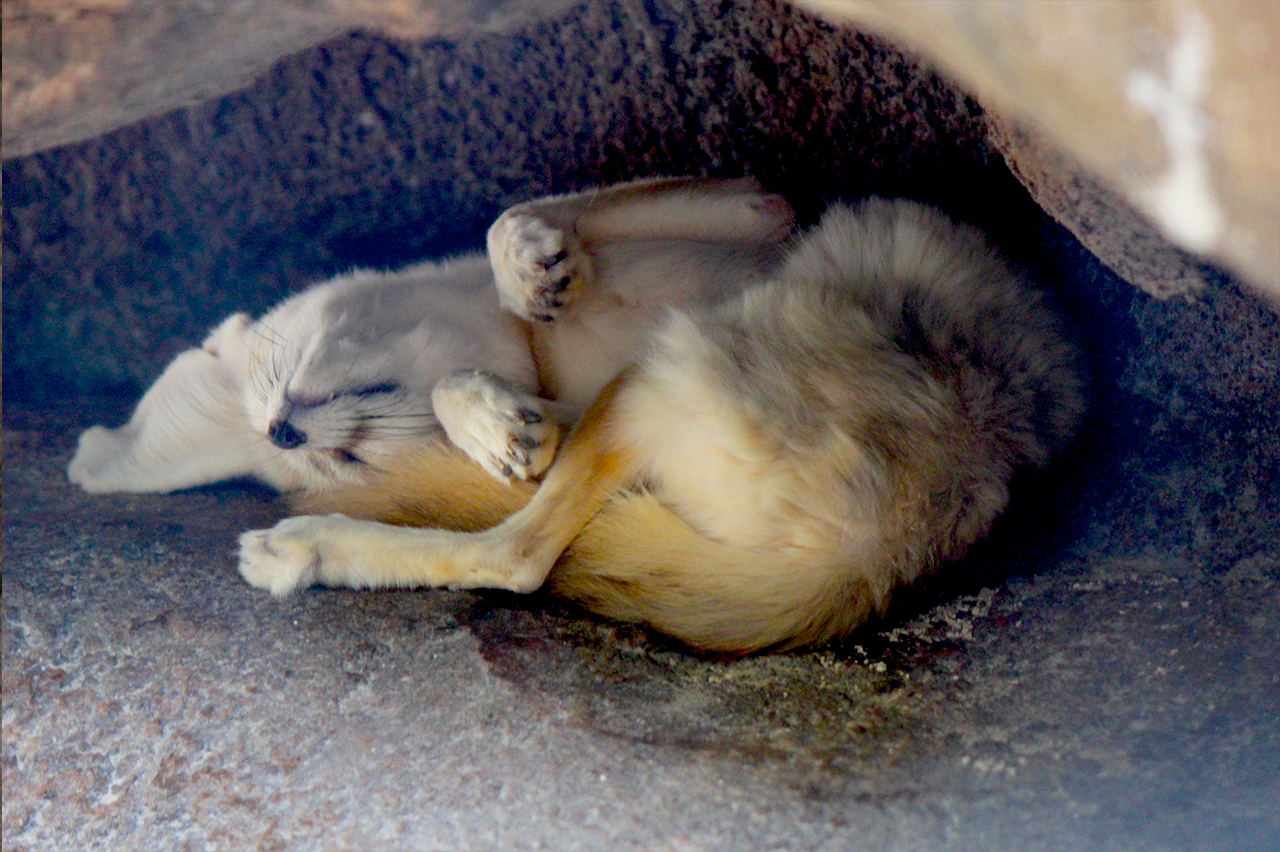Vulpes zerda
Fennec Fox
About Me
These small foxes live in family groups of sometimes up to 10 individuals. These groups are often led by the parents and will sometimes share massive dens with other families.
Fennec Foxes show abundant play behavior and communicate with a complex collection of barks, yips, and growls. Despite this sociable nature, they prefer to hunt alone and are nocturnal. At the Honolulu Zoo, our Fennec Foxes will stay ‘up late’ enough into the late mornings, before settling down to sleep the day away.
The Fennec Fox is the smallest of the known fox species, and also possesses the largest ears of any fox. Both of these adaptations allow it to avoid overheating in hot desert environments. Another useful adaption are fur-covered paw pads to protect them against burning sand. Their coats are light and sandy in color, are thick and soft.
Fennecs are omnivores and will take whatever is available. In the wild, they regularly prey on birds, eggs, invertebrates, and other small animals. Extra food is sometimes hidden away for later. Much, if not all of their water is collected from eating fruits and roots of plants. At the Honolulu Zoo, some of our foxes are very fond of blueberries, and they enjoy live mealworms as treats during their training sessions.
Fennec Foxes mate for life and sometimes adult offspring will remain with the family to help raise younger siblings. Females are only in heat for several days between January and February.
These small foxes live in family groups of sometimes up to 10 individuals. These groups are often led by the parents and will sometimes share massive dens with other families. Fennec Foxes show abundant play behavior and communicate with a complex collection of barks, yips, and growls. Despite this sociable nature, they prefer to hunt alone and are nocturnal. At the Honolulu Zoo, our Fennec Foxes will stay ‘up late’ enough into the late mornings, before settling down to sleep the day away.
The Fennec Fox enjoys a wide range with stable populations, so it is listed as a species of Least Concern by the IUCN Red List. Some wild individuals are collected for the pet trade, but the Honolulu Zoo cautions against keeping animals directly from the wild, as they are untrusting of humans, and their nocturnal habits make for poor companions.
The Honolulu Zoo is home to a mated pair of Fennec Foxes (Moana and Aukai) and their adult son, Vitea.
Vulpes zerda . (n.d.). Retrieved January 13, 2017, from http://www.iucnredlist.org/details/41588/0
Adams, R. (n.d.). Vulpes zerda (fennec). Retrieved January 13, 2017, from http://animaldiversity.org/accounts/Vulpes_zerda/
Other Mammals

Sacred Baboons are common throughout northeastern Africa, but are extinct in the Nile region and Egypt, where they originally received their name and were worshiped by the ancient Egyptians.

Bongo are most active at dawn and dusk, and often forage near the edges of wooded areas. They normally shy in the wild and flee into the forest for cover at the slightest provocation.
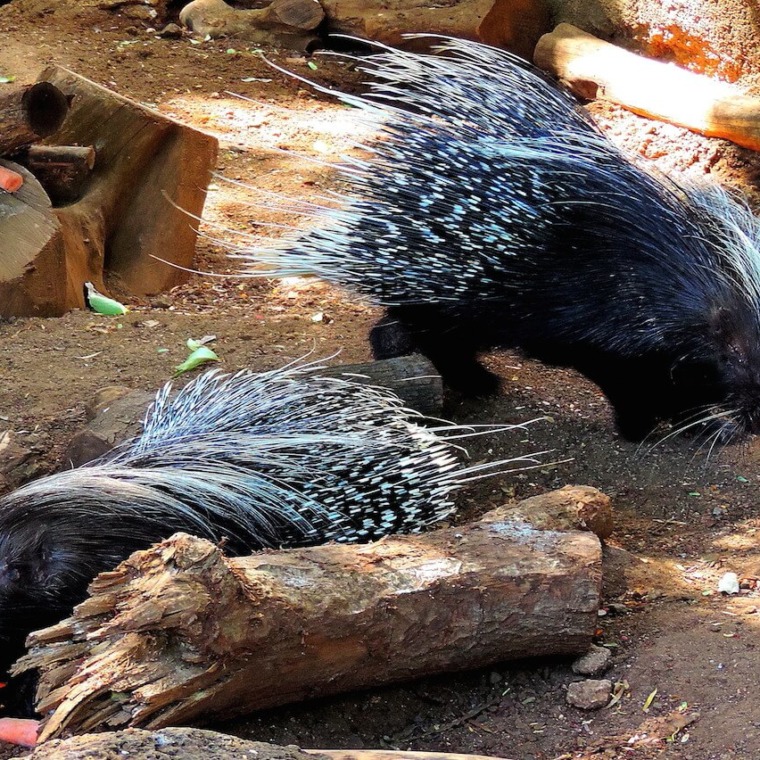
The North African crested porcupine is nocturnal. They are very adaptable and can be found in forests, on plantations, in rocky or mountainous areas as well as in deserts.

Sloths are found in Central and South America in the rain forest canopy. The Linne’s two-toed sloth is found in such countries as Nicaragua, Columbia, Venezuela, Surinam, Guyana, French Guiana, North Central Brazil, and Northern Peru.

Siamangs range through southeastern Asia and are found in some numbers in the Malay Peninsula and Sumatra.


